Solanum lycopersicum, commonly known as tomato plants are herbaceous perennial plants that are members of the nightshade family. It may surprise you to hear that this plant is a perennial, because typically it is grown as an annual garden plant; however, in a climate that is warm year round, many types of tomatoes can and do return year after year to produce fruit.
These easy to grow plants are the most popular home vegetable garden plant because they produce tremendous amounts of fruit yet require very little care or space. In this article, we provide sound advice on growing tomatoes at home. Read on to learn more on how to grow tomatoes.
What You'll Learn Today
- How Long Does It Take Tomatoes To Grow?
- How Big Do Tomato Plants Grow?
- Begin With Healthy Plants
- Choose The Variety That Suits Your Climate & Gardening Style
- When Should You Plant Tomatoes?
- How Can You Be Sure Your Tomatoes Are Getting Enough Water?
- Black Plastic Mulch Performs Many Functions
- How Do You Plant Tomato Plants?
- Why Do You Need To Support Tomato Plants?
- Prune To Keep Your Tomatoes Under Control!
- What About Container Tomatoes?
- Are Tomato Plants Prone To Pests And Diseases?
- Frequently Asked Questions
- When is the recommended time to start planning for a summer tomato harvest?
- What happens if you plant tomatoes too early in the season?
- If you are growing tomatoes from seeds, when should you start them?
- How do you know which tomato cultivars will do best in your area?
- Why is disease resistance such an important consideration in tomato plant choice?
- How long does it take tomato plants to produce fruit?
- How can you choose between hybrid and heirloom tomatoes?
- Why is it important to choose the right size tomato plant for the space you have?
- What is the correct plant spacing for optimum tomato plant health and growth.
- Is it true you should put a whole egg in the planting hole when transplanting a tomato seedling?
- Tomatoes Are A Versatile Garden Veggie That Can Be Enjoyed Year-Round
How Long Does It Take Tomatoes To Grow?

Similarly to other veg (e.g. sweet potatoes), there are many different kinds of tomatoes with a wide variety of maturity times.
The maturity time is defined as the number of days it takes for tomato seedlings to attain fruit bearing status in your garden.
Generally speaking, tomatoes are categorized as early-season, midseason or late-season based on the maturity or ripening time.
It’s a good idea to plant a mix of these types so that you will have fresh tomatoes throughout the growing season.
How Big Do Tomato Plants Grow?
How tall your tomato plants grow depends upon whether they are considered determinate plants or indeterminate. These terms refer to the tomato plants’ growth habit.
Determinate plants grow to a certain height and then they stop. They are also intended to grow to a certain age and then die. They typically live through the summer and die off in the early autumn.
Determinate tomatoes are usually fast growing and fast maturing plants. They will flower all at once, set their fruits and be done. This type of tomato is very good for canning because it produces lots of tomatoes all at once.
Determinate tomatoes are also a good choice for gardeners with limited space because the plants are naturally smaller. There are many nice varieties that can be grown on a balcony or patio in a container.
Indeterminate plants grow to an undetermined height. They will grow as big as they have space to grow. They also continue to flower and set fruit throughout the growing season, only stopping when they are killed by cold.
Indeterminate tomato plants need to be trained to climb, and they must be pruned to keep their size under control.
If properly trained and pruned, you can keep your indeterminate tomato plants to a height of about eight feet. If you don’t control them, they will ramble and clamber over your garden with wild abandon.
Indeterminate tomatoes are a good choice for gardeners with plenty of space who wish to harvest tomatoes throughout the spring, summer and into the autumn.
They will keep producing until they are killed by the cold in the fall or even early winter. If you live in an area that is warm year round, they’ll just keep going.
Begin With Healthy Plants
No matter which kind of tomatoes you choose, you must begin by looking for healthy plants. Examine the seedlings carefully for signs of disease or for any insect pests.
When purchasing seedlings at your local garden center, look for strong, upright plants with sturdy stems that are about as thick as a pencil.
Seedlings for transplant should have about half a dozen true leaves, but they should not yet have any flowers or fruit.
Strong, healthy, disease-free tomato seedlings will transplant easily without the drawback of transplanting shock.
Choose The Variety That Suits Your Climate & Gardening Style
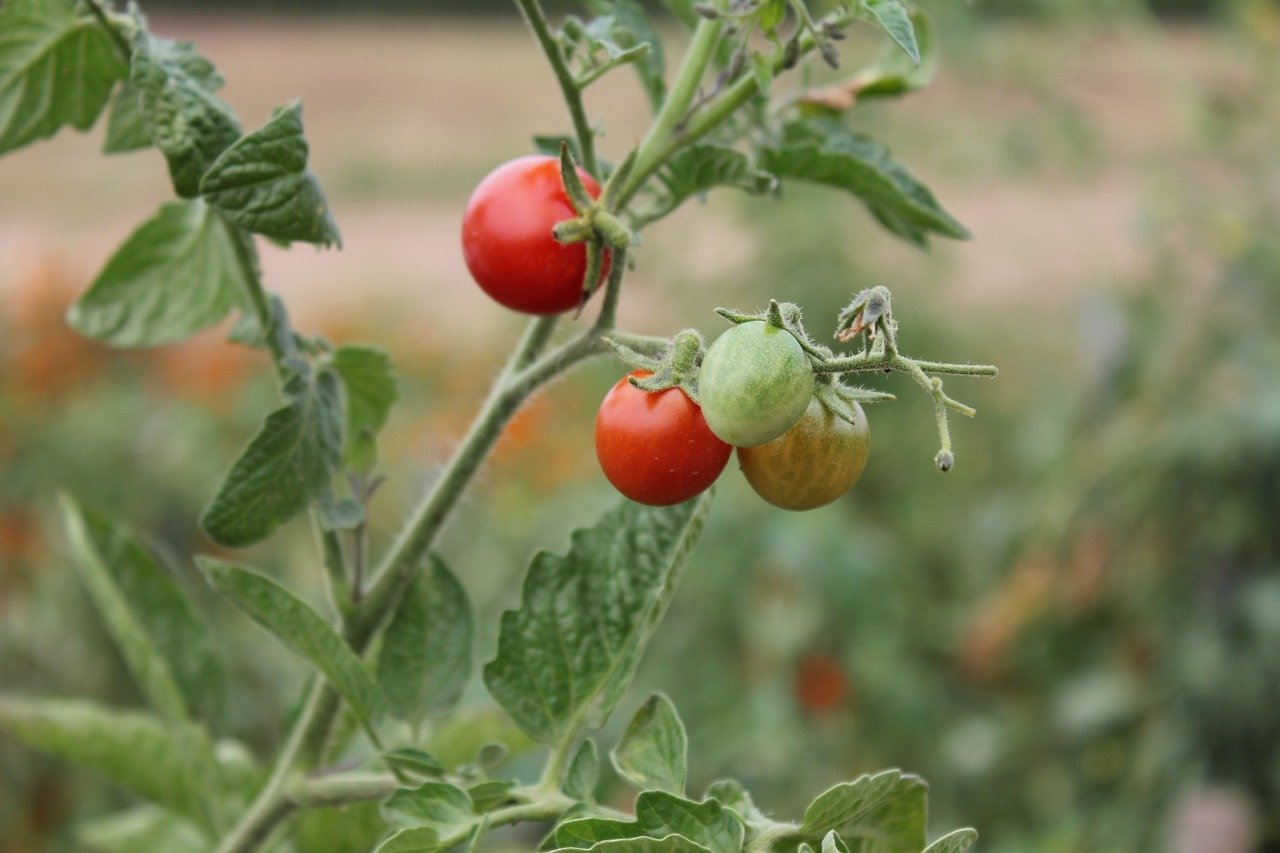
When determining exactly which variety of tomato plant you want in your garden, it can be very good idea to research by perusing gardening catalogs or nursery websites to get an idea of the qualities of the plants that are available to you.
Container Varieties
If you’re looking for smaller, more compact varieties that you can grow in baskets or containers on your balcony, patio or deck, look for the terms dwarf, patio or midget in the plants’ names.
These smaller, usually determinate, plants typically produce fairly small fruit, but there are some exceptions. Some varieties do produce full-size fruit on small, sturdy plants.
If you want a great deal of small fruit, look for a cherry tomato plant. These are usually indeterminate plants which grow quickly, easily and enthusiastically.
They do well in hanging baskets or climbing balcony or patio trellises, and they produce lots of little, sweet, tasty tomatoes throughout the spring, summer and autumn.
Grape tomatoes are another good choice if you want small, tasty, interesting fruit. These cultivars are hybrids and are available in a wide variety of attractive, novel fruits in shades of:
- Purple
- Brown
- Orange
- Yellow
- Pink
Some produce striped or variegated fruits in combinations of these colors.
Beefsteak Tomatoes
If you want very large tomatoes, look for beefsteak varieties. These produce fruits that can weigh a pound or more. They’re good for slicing and also for eating out of hand.
One drawback to beefsteak varieties is that the large heavy fruit are quite likely to crack if left to become overripe or if left unharvested before heavy rain.
Beefsteak tomatoes are late-season ripeners, so you’ll probably want to plant a few other varieties to keep you in tomatoes during early and midseason.
Cooking & Canning
If you want cooking tomatoes, go for paste tomatoes, such as Romas. These have oval-shaped or pear-shaped fruits with very few seeds and very dense, meaty interiors. They are a good choice for making sauces or for canning for winter use.
Hybrids
If you want a very rugged, easy to grow, vigorous type of tomato, look into hybrids. A hybrid is a cross between two different types of tomato, and as with all hybrids, the result is offspring that combines the best of both parents.
Hybrid tomato varieties possess what is known as “hybrid vigor”. This usually means that they have superb flavor and are very resistant to diseases and garden pests.
Hybrids are typically very easy to grow and perform beautifully. The only drawback is that if you want to save your own tomato seeds from one year to the next, you will not be able to replicate your hybrid tomatoes. The seeds will not grow true.
Heirloom Tomatoes
For an interesting, authentic, old-fashioned garden you may wish to look into heirloom tomatoes. You can usually find seeds through specialty seed catalogs or by joining a seed exchange.
Heirloom tomatoes are open pollinated, older cultivars that typically possess superb eating quality along with interesting shape and/or color. Some have very pretty foliage as well. This is known as potato leaf foliage.
Many gardeners choose to grow them as a form of genetic preservation, which is a way of keeping old-fashioned plants from dying out.
Heirloom tomatoes are typically those that were introduced prior to 1940 and may have been passed down from one generation to the next within a family.
Some of the most popular varieties of heirloom tomatoes include:
- Cherokee Purple
- Mortgage Lifter
- Brandywine
- Rutgers
Although these old-fashioned varieties are sometimes prone to tomato maladies and problems, they are still interesting and enjoyable to grow.
If you have the space and are so inclined, you may wish to include one or two heirloom plants in your tomato patch.
When Should You Plant Tomatoes?
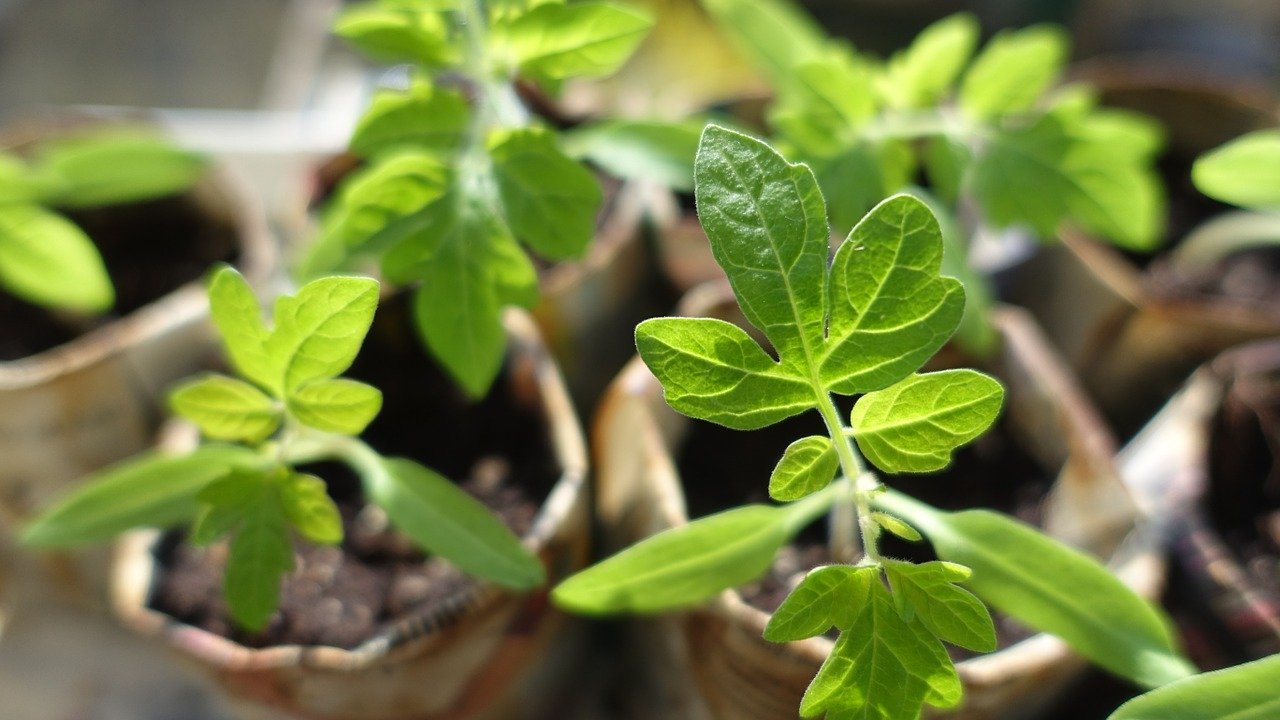
Tomatoes are warm weather plants, so you must not plant them outdoors until all danger of frost has passed. This will vary depending on your location. Keep a close eye on your local weather forecast to determine the best transplant time in your area.
If you happen to miss by a day or two and find yourself surprised by cold snap, you can take steps to protect your young plants from freezing.
Generally speaking, to grow and produce well, tomatoes need daytime temperatures of about 90°F and nighttime temperatures at or above 75°F. The soil should be a minimum of 60°F.
2 Steps To Prepare Your Tomato Bed
1. Consider location
One of the first things you should keep in mind when preparing your tomato bed is location. Be certain to choose a site that receives a minimum of six hours of direct sunlight daily. Tomato plants do best with six to eight hours of sun. Any less will reduce production.
Another point to keep in mind when choosing the location for your tomato bed is the fact that tomatoes need lots of water. Be sure to put your tomato bed near a water source.
When considering location for your tomato bed, look around and be certain that there is not a Black walnut tree in the vicinity.
Black walnut trees release a toxin into the soil that can kill your tomato plants. Don’t establish your tomato bed within 75 feet of one of these trees.
2. Prepare the soil
Tomatoes are tolerant of a wide variety of types of soil (and even non-soil based mediums, e.g. hay bales), but they do best in well draining, loamy, deep soil that has been amended with organic matter. If you have problem soil, you must take steps to amend it before starting your garden.
For example, if your soil contains a great deal of heavy clay, you must till in compost, peat moss or other organic matter to lighten it and improve its structure and drainage capacity.
Alternately, you can begin preparing your potential tomato patch the year before by growing a cover crop to plow under before the growing season starts.
It can take a number of years to amend your soil sufficiently to make it perfect for tomato gardening. In the interim, you may want to buy some good topsoil to top off your existing soil and grow your tomatoes.
At the end of the growing season, you can till this topsoil in along with amendments. This is a process that may need to be repeated for several years.
Raised bed gardening is a good way to grow tomatoes. When you do this, you’re essentially creating a giant flowerpot (4′ x 10′) for your tomatoes.
You simply build a large, contained bed with several thicknesses of cardboard and/or landscape fiber on the bottom.
Fill it with good topsoil and plant your tomatoes. You’ll need to add to and amend the soil annually to keep it nourishing and vital.
How Can You Be Sure Your Tomatoes Are Getting Enough Water?
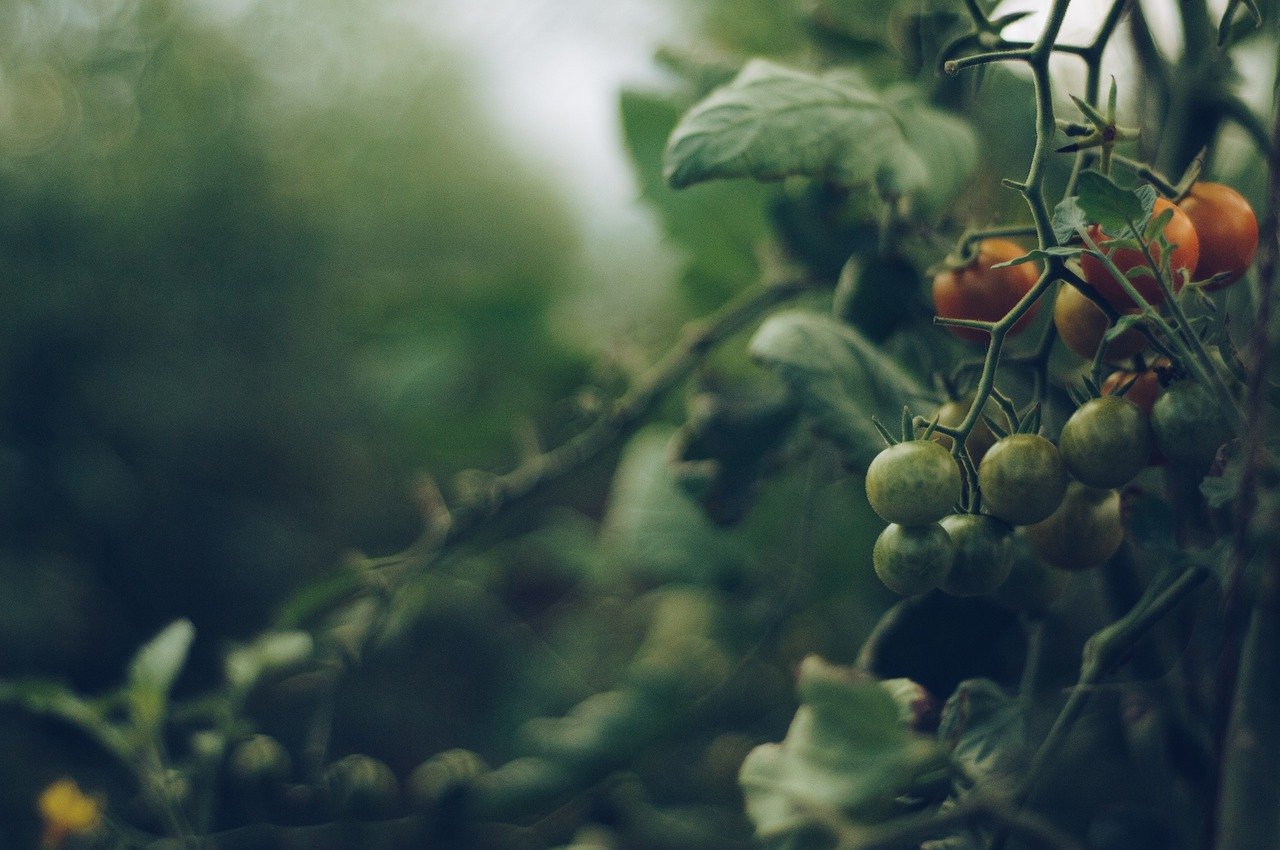
1. Water Regularly And Correctly
Tomato plants typically need a deep watering of one or two inches of water on a weekly basis. You must adjust this depending upon your climate and weather and the type of soil you have.
Water in the morning so that your plants will have plenty of time for leaves to dry before dark. This reduces the risk of fungal infections.
Used a soaker hose to save water by delivering it directly to the soil surrounding your plants. Avoid getting the leaves wet.
2. Use Mulch
One way that you can make the most of the water you have and prevent your tomatoes drying out is by applying a thick layer of mulch.
When your tomato plants are well established, add two or three inches of bark chips, weed free straw or other organic matter to the surface of the soil. This helps the soil stay cool, retains water and also prevents the growth of weeds.
Don’t apply mulch too early because it will prevent the soil from getting warm enough for good growth of young seedlings and their roots.
Generally speaking, you can apply mulch early in the month of June, but this may vary from one location to another.
Black Plastic Mulch Performs Many Functions
Commercial growers often use black plastic as mulch, and you can do this in your home garden. This type of mulch absolutely suppresses weeds between plant rows.
It also helps warm the soil up early in the springtime, so it’s a good idea to use it early in cooler climates.
Another advantage of using black plastic as mulch is that it prevents splashes from the soil when you water. This helps prevent fungal diseases.
Black plastic mulch is a good choice for raised bed gardening. Just roll it out after you have prepared the soil, secure it in place and then cut openings in the plastic to dig your planting holes and set your plants.
Black plastic is also good mulch to use if you are planting early season tomatoes that ripen within a couple of months.
Begin by laying down the black plastic two or three weeks prior to planting your seedlings. This will warm up the soil thoroughly.
After you plant your early tomatoes, put tomato cages in place and surround them with clear plastic sheeting to provide your tender seedlings with extra protection and support.
You can be sure that your tomato seedlings stay warm at night by filling clear plastic bottles with water and lining them up inside the tomato cage to surround the plants. The water will retain the sun’s warmth overnight. Even with this added protection, you may need to cover your early tomatoes overnight to prevent freezing.
How Do You Plant Tomato Plants?
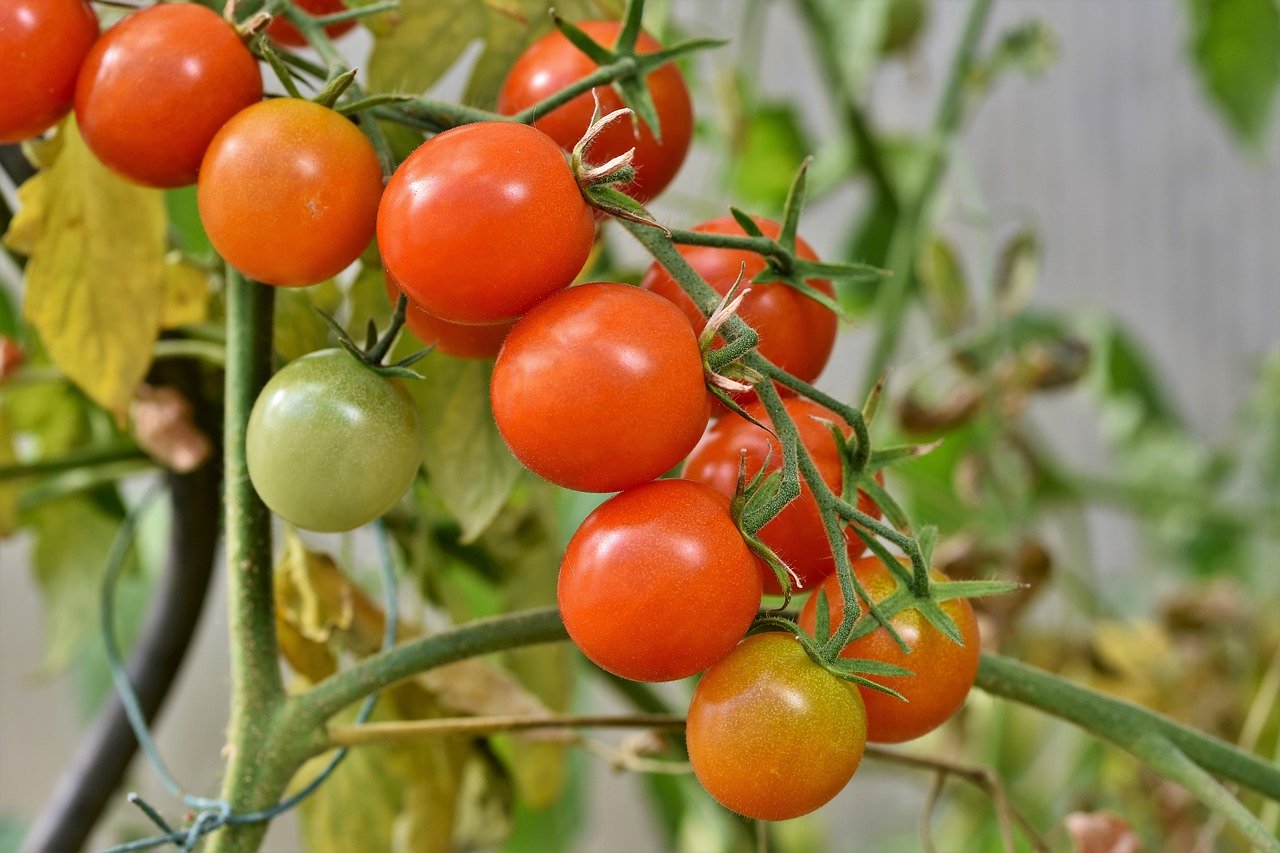
When you dig holes to plant your seedlings, dig a hole that is deep enough for the soil to reach up to the first set of leaves. The buried stem will grow new roots, and this will provide the plant with a strong, healthy root system.
Before you set the plant in the hole, mix a quarter cup of hydrated lime or ground limestone into the soil at the bottom of the hole. This helps prevent blossom end rot.
Note that if the soil is still cold, you can use a technique known as horizontal planting to prevent burying the tender roots deep in the cold earth. This is especially effective if you have leggy seedlings.
With this method, you dig a shallow trench and lay the plant down in it with the top two or three sets of leaves outside the trench. Remove leaves below the top sets of leaves.
Cover the roots and stem with soil. The top of the plant will bend upwards toward the sun and will grow straight up. The entire submerged stem will grow new roots.
Be sure to give each plant plenty of space. Tomato plants should be spaced two feet apart within a row, and the rows should be five feet apart.
This spacing will ensure that they have plenty of room to spread and grow, and they will have ample air circulation to prevent problems with fungal growth.
If you’re using tomato cages, increase the space between plants by about a foot. Place any support material such as stakes and cages at the time of planting. This will prevent damage to plants and roots later on.
Why Do You Need To Support Tomato Plants?
Indeterminate tomato plants must be supported because they will simply ramble far and wide unless they are trained to grow up.
Additionally, supporting tomato plants keeps their leaves off the ground so that they are less likely to contract fungal diseases. Tomato plants that are properly pruned and trained and supported will also produce more fruits of higher quality.
Even indeterminate tomato plants benefit from the support of a stake or cage. Good support helps prevent breakage and collapse caused by the weight of the fruit. Be sure that any support you use is well secured in the ground to avoid toppling.
Secure plants to supports firmly, yet gently. You’ll want to secure a main stem of the plant. Begin by removing suckers (excess leaves and stems).
Fasten plants to stakes, cages or other supports using soft strips of cloth. If you use wire, it is likely to cut into the plants’ stems. Tie lightly using a figure-8 loop.
Prune To Keep Your Tomatoes Under Control!
Examine your tomatoes frequently and trim off any damaged or yellowed leaves and stems. You will especially want to prune indeterminate tomatoes to keep them from running rampant.
Look for shoots and suckers that grow at the point where the plants’ branches connect with the stem.
If you allow the suckers and shoots to grow, they will produce flowers and fruit; however, allowing this puts strain on the plant and forces it to produce lots of smaller, lower quality fruit rather than fewer large, high quality tomatoes.
It’s a good idea to pinch off suckers and shoots as they appear.
Determinate tomatoes don’t typically need as much pruning because they are naturally limited in size and shape. Nonetheless, it’s a good idea to examine them frequently and remove suckers and damaged stems and leaves.
Indeterminate tomatoes are often supported on stakes. When this is the case, it’s a good idea to prune them down to between one and three main stems and keep the suckers pinched away.
Determinate tomatoes are often supported with cages. This allows them to grow more full and in their natural shape. Tomatoes grown in cages require less pruning than those grown on stakes.
What About Container Tomatoes?
If you have very limited space or very poor soil or both, you may want to grow determinate tomatoes in containers.
This is an easy pursuit that allows you to simply use commercial planting mix and a good quality, organic slow release fertilizer.
Be sure that your containers are large enough to house your tomatoes comfortably and healthily.
Good tomato containers should have ample drainage holes, and you’ll need to take great care not to overwater or underwater with a container plant.
Keep a close eye on your plants and adjust your watering and fertilizing schedule according to their needs.
Keep Your Tomato Plants Well Fed!
When you transplant your tomato seedlings, you’ll want to give them a feeding of a starter fertilizer. You’ll feed them again when they produce their first tomatoes.
Generally speaking, you’ll fertilize once every week or two throughout the growing season. For more and fertilizing see our article.
Are Tomato Plants Prone To Pests And Diseases?

If you follow the advice presented here, your tomato plants should be fairly disease-free. Disease and pest problems generally arise when growing conditions are unbalanced, and you may be then facing a challenge of saving a dying tomato plant.
Illnesses to look out for include:
- Black Walnut Toxicity
- Leaf Spot Disease
- Blossom End Rot
- Verticillium Wilt
- Fusarium Wilt
- Poor Fruit Set
- Early Blight
- Late Blight
Most of these problems can be prevented by choosing disease-resistant varieties of tomato plants and maintaining sound care and cultural practices.
Common tomato pests include:
- Stalk Borers
- Hornworms
- Stink Bugs
- Aphids
For more on common tomato diseases and pests see our article; here is also our article about white spots and their causes.
In addition, you should be also ready for birds, squirrels and other animals that love tomatoes, and you need to keep them away.
Frequently Asked Questions
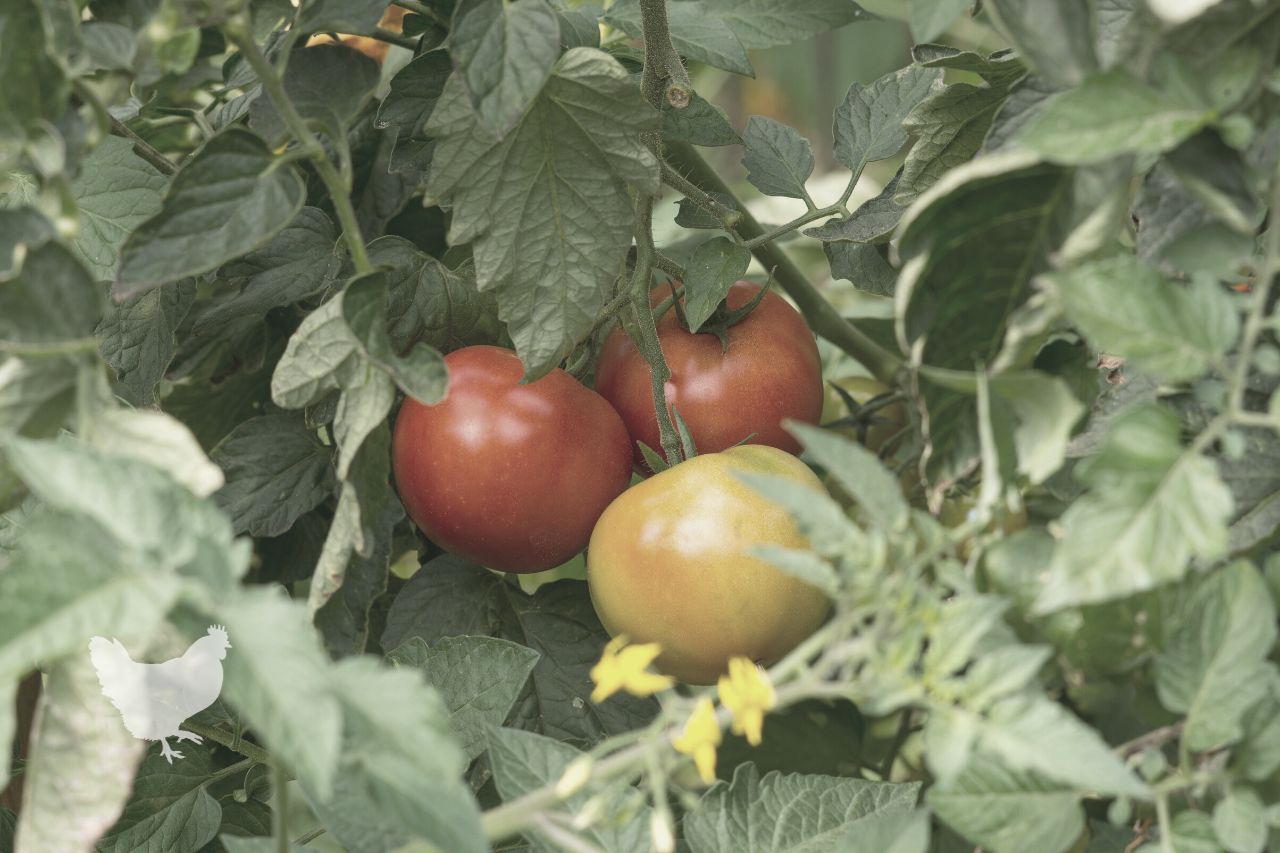
When is the recommended time to start planning for a summer tomato harvest?
A: Ideal planting time varies from region to region. In order to ensure a good summer harvest, talk with local gardeners and/or your county agricultural extension agent to find out the best types of tomatoes to grow in your area and the best planting times. Study current catalog offerings, and keep your own garden records so that you can tweak performance year-to-year by choosing just the right cultivars and setting just the right schedule.
What happens if you plant tomatoes too early in the season?
A: Tomatoes are heat-loving plants, so planting them too early and exposing them to cold temperatures may cause frost damage and stunted growth. Be sure to wait until after the last predicted frost to plant your tomatoes, or provide protection against cold temperatures.
If you are growing tomatoes from seeds, when should you start them?
A: Give your tomato seedlings a head start indoors six-eight weeks before you plan to plant them out into your garden. When your seedlings are strong and sturdy, and the outdoor temperatures are reliably warm, begin acclimating them to the garden by setting them outdoors, in a sheltered setting, for a little while each day. You can gradually extend the amount of time and exposure to the elements to help them “harden-off”. This process helps prevent weak, leggy plants.
How do you know which tomato cultivars will do best in your area?
A: To choose the right cultivars for your garden, your primary consideration may be the plants’ growth habit. Do you have space for indeterminate or determinate tomato plants? Indeterminate plants climb and ramble a great deal. They also continue producing fruit for a longer period of time. Determinate cultivars grow to an established height and produce fruit for an established time period.
In addition to the growth habits and size of your plants, you may ask yourself a few more questions. Will you use your tomatoes for cooking, preserving or eating fresh? Do you want to grow modern hybrid tomatoes or well-established heirloom varieties? No matter what your thoughts on any of these considerations, it is always a good idea to seek out disease resistant tomato cultivars.
Why is disease resistance such an important consideration in tomato plant choice?
A: When you choose disease resistant tomato cultivars, you can save yourself a lot of trouble and heartbreak. Cultivars that resist diseases include:
- Alternaria stem canker (ASC)
- Tobacco mosaic virus (T)
- Septoria leaf spot (L)
- Verticillium wilt (V)
- Fusarium wilt (F)
- Nematodes (N)
Look for the capital letter abbreviations in cultivar names to identify disease-resistant varieties. These specially developed plants are easy-care and simply perform better than plants that have not been bred to resist common diseases. With disease resistant cultivars, you may be able to use few or no chemical products such as fungicides and pesticides.
How long does it take tomato plants to produce fruit?
A: The number of “days to maturity” of any given variety of tomato plant varies depending on a number of factors. Different cultivars are developed to have varying maturity periods. For example, Beefmaster tomatoes can take 80 days to reach full maturity. Early Girl (as the name implies) can produce ripe fruit in only 50 days. Weather, soil conditions and care also influence tomato plants’ rate of growth and production.
How can you choose between hybrid and heirloom tomatoes?
A: Hybrid tomatoes are the result of crossing two different types of tomatoes in order to further the best traits of both. They must usually be purchased as seedlings because they may not grow true from seed. Modern hybrids are often bigger, stronger, tastier and easier to grow. Heirloom tomatoes are old, established cultivars that do grow true from seed. This means that you can collect seed from the fruits of your plants year after year with full confidence that the seed you plant will produce exactly the same sort of tomato plants each and every time.
Why is it important to choose the right size tomato plant for the space you have?
A: Crowded plants are more subject to disease spread and pest infestation. To keep your plants happy and healthy, you need to have ample air flow and unobstructed sunlight. For this reason, you must be sure to have a foot or so of space between plants.
What is the correct plant spacing for optimum tomato plant health and growth.
A: Staked tomato plants should have a couple of feet between plants in rows, and the rows should be 3-4 feet apart. Caged tomatoes should be planted two or three feet apart, and their rows should be 5-6 feet apart. Generous spacing gives the plants room to thrive, and it also gives you room to work in the garden.
Is it true you should put a whole egg in the planting hole when transplanting a tomato seedling?
A: This is sort of an old wives tale. Putting an egg in the planting hole is said to impart extra calcium and nourishment to the growing plant. Incorporating crushed egg shell into the planting soil is probably more effective in delivering added calcium and will not attract egg-hungry digging critters, such as raccoons and skunks.
Resources:
Tomatoes Are A Versatile Garden Veggie That Can Be Enjoyed Year-Round
When you take the time to establish your tomato patch in the right location with the right soil and a good selection of tomato varieties to suit your needs, you can enjoy fresh tomatoes out of hand, in salads and in a wide variety of cooked dishes throughout the growing season.
Additionally, tomatoes are easy to can or freeze to enjoy during the winter months. Growing tomatoes at home saves money on your grocery bill and is a great investment in your own health and well-being.
I’ve been a farmer for nearly 20 years. And to be honest, tomatoes are probably one of the simplest-to-grow veggies.